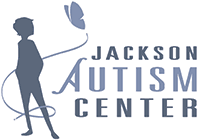On January 25 of this year, I had the honor of presenting at the annual JACUS conference regarding children with autism spectrum disorders and related disabilities and how to accommodate and modify for these children in a typical preschool setting. The title of the presentation was “Making a Difference for Every Child: Teaching a Child with Characteristics of Autism.” At young ages, children may or may not have a diagnosis. It is important to remember regardless of differences, all children can benefit from an inclusive setting. *Here are 5 ways to accommodate and modify for these preschoolers who may have characteristics of autism:
#5 If the child is having trouble sitting for circle time or for center type activities, consider incorporating a movement song or two in between activities. Another strategy that may work is to give the child a “job” or responsibilities that allow movement, such as getting the calendar pieces or passing out instruments. Some children do well using a move-n-sit cushion because it keeps them in their chair or space, but allows them to wiggle.
#4 If a child is having trouble completing the same work that other children are completing, consider modifying the assignment to allow the child to finish the assignment and be successful. For example, if the child has trouble cutting out difficult shapes, cut out some of them beforehand and allow the child to cut some out. If there is a tracing worksheet, consider snipping off the bottom half to reduce the amount of work the child needs to complete.
#3 If there seems to be a difficult time of the day for the child or the child seems to get stressed out about a particular event, such as going to the bathroom or coming inside from recess, consider writing a social story to help increase understanding of what is going to happen, when, and why. Through understanding, anxiety and challenging behaviors may decrease.
#2 Use pictures to help increase understanding. Some examples are a picture schedule on the wall that gives the order of what will happen when during the day so the child knows what to expect. This can benefit all children. Some children may benefit from the use of pictures and/or written words during activities too.
#1 Use straight forward language that gets to the point. For example, “Sit down.” or “Line up.” Simplifying language helps ensure that the teacher’s message gets across to the child and is understood.
*Please keep in mind that all children are individuals and strategies that work for one child may not work for another child.
